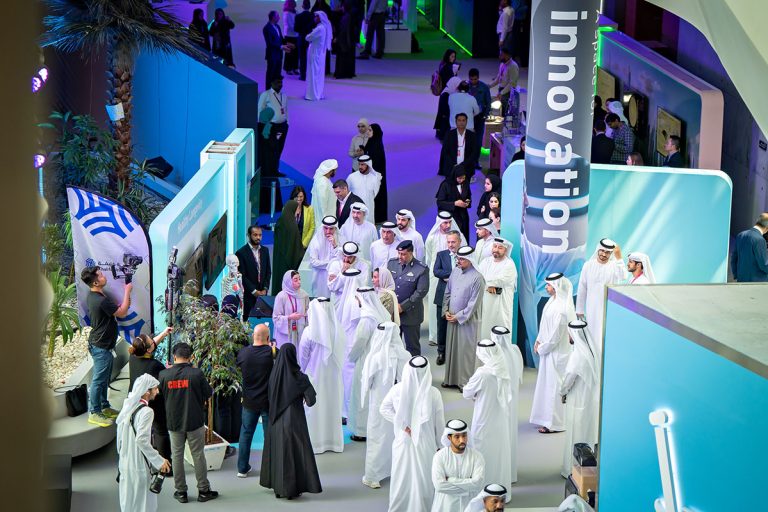Smart materials supercharge nuclear power
Computer modeling and artificial intelligence enable nuclear power plants to store and release energy more efficiently, paving the way for a more reliable and greener grid.
Imagine a power plant that can’t slow down. Nuclear reactors are designed to run full throttle, but the electricity we use goes up and down throughout the day. This creates a big problem: when demand is low, the plant is still churning out power that goes to waste. It’s like a high-performance engine stuck in traffic—inefficient and costly.
But what if a nuclear plant could store all that excess power for later? Researchers at Khalifa University have found a way to do just that, using clever new materials and computer modeling to turn a nuclear reactor into a powerful thermal battery. Their groundbreaking work is making nuclear energy not only more profitable but also a better partner for a greener, more flexible power grid.
“By storing heat during low-demand hours and using it to generate extra electricity during peak demand, we can improve how a nuclear power plant works, without changing how the reactor itself operates.”
Deepak Selvakumar
“Frequently changing the output of a nuclear power plant is technically complex and economically costly,” explains Deepak Ramachandran from the Emirates Nuclear Technology Center. “This mismatch between generation and demand reduces the overall economic efficiency.”
Boosting nuclear power plant efficiency
Ramachandran and his colleagues, Abdulrahman Mohammad and Ahmed Alkaabi, in collaboration with researchers from the University of Birmingham, have introduced a way to boost adaptability and profitability by thermally storing energy that is not immediately required.
“Our study shows that by storing heat during low-demand hours and using it to generate extra electricity during peak demand, we can improve how a nuclear power plant works, without changing how the reactor itself operates,” says Ramachandran.
The team considered latent heat thermal energy storage (LHTES), which uses a phase-change material that melts when heated and releases heat as it cools, storing thermal energy like a battery. A simple way to picture this is with a reusable hand warmer.
“Storing this magnitude of energy in electrical batteries, however, would be physically impractical due to size and cost constraints,” explains Ramachandran. “LHTES offers a more feasible solution for large-scale energy storage.”
Modeling a profitable future
What sets KU’s research apart is its reactor-specific focus, as it’s tailored to APR1400 nuclear reactors such as the one used in the Barakah Nuclear Power Plant in the United Arab Emirates. The researchers validated their findings using two distinct but complementary approaches.
“Integrating thermal energy storage systems into nuclear power plants allows excess heat during nuclear off-peak operation to be stored and later used during high-demand periods, enhancing flexibility and reducing waste.”
Imran Afgan
Ramachandran’s team used detailed technical computations and a financial analysis to test their system’s viability over a 25-year lifespan. The results showed a 99.75% likelihood of profitability under peak tariff conditions. “While LHTES integration with nuclear power plants is of growing global interest, much of the existing literature remains conceptual or preliminary,” says Ramachandran.
Meanwhile, colleagues Muhammad Faizan and Imran Afgan at the Department of Mechanical and Nuclear Engineering used a different approach, employing sophisticated computer modeling known as computational fluid dynamics (CFD) to simulate how heat flows within the system. This physical data was then fed into machine learning algorithms to predict and optimize key performance parameters.
Unlike previous studies, KU’s approach integrates CFD, machine learning, and techno-economic analysis into a unified framework, specifically designed to accommodate real-time demand fluctuations. “Integrating thermal-energy storage systems into nuclear power plants allows excess heat during nuclear off-peak operation to be stored and later used during high-demand periods, enhancing flexibility and reducing waste,” explains Afgan. “It enables nuclear plants to complement the variable output of renewable energy sources and in this way stabilize the grid.”
Paving the way for practical adoption
The findings of both teams pave the way for practical adoption in the region.
“Eventually, we aim to collaborate with nuclear operators and energy planners in the UAE and beyond to explore pilot projects,” says Alkaabi. “Our long-term vision is to make thermal storage a standard feature in future nuclear power plants.”
To implement this strategy, the researchers emphasize the need to move from concept to action, starting with pilot-scale deployment, policy alignment, and technical collaboration with energy authorities.
“Implementing this optimized TES system can help the UAE enhance grid flexibility, reduce peak load stress, and utilize surplus nuclear heat effectively,” says Afgan. “This integration supports the nation’s commitment to sustainability and carbon-free energy by minimizing fossil fuel dependence and improving nuclear efficiency.”
References
- Ramachandran, D.S.; Mohammad, A.H.; Dai, S.; Ding, Y. and Alkaabi, A.K., Economic feasibility analysis of LHTES integration with a nuclear power plant. Applied Energy 392, 126026, 2025. | Article
- Faizan, M. and Afgan, I., Dynamic assessment and optimization of thermal energy storage integration with nuclear power plants using machine learning and computational fluid dynamics. Applied Energy, 391, 125939, 2025. | Article
- Afgan, I. Dynamics assessment and optimization of thermal energy storage integration in nuclear power plants using machine learning and computational fluid dynamics. 32nd International Conference on Nuclear Engineering (ICONE 32), Panel talk 6, Weihai, Shandong, China, June 22-26, 2025. | Article




